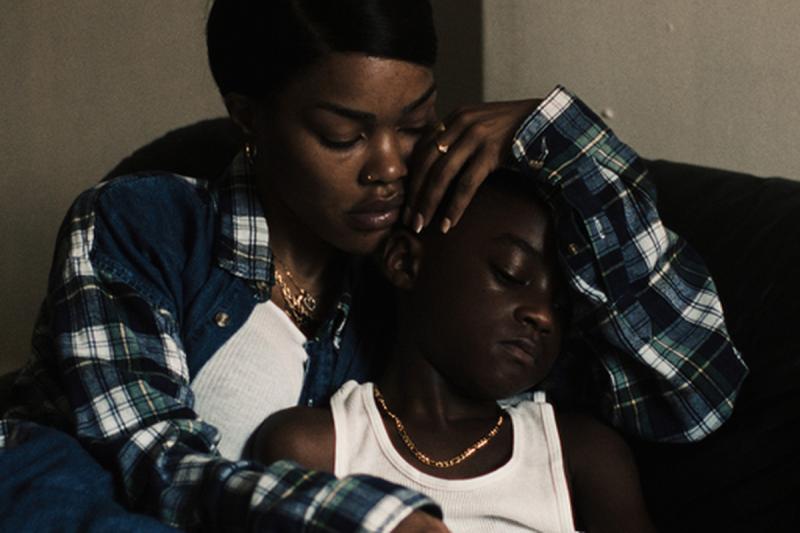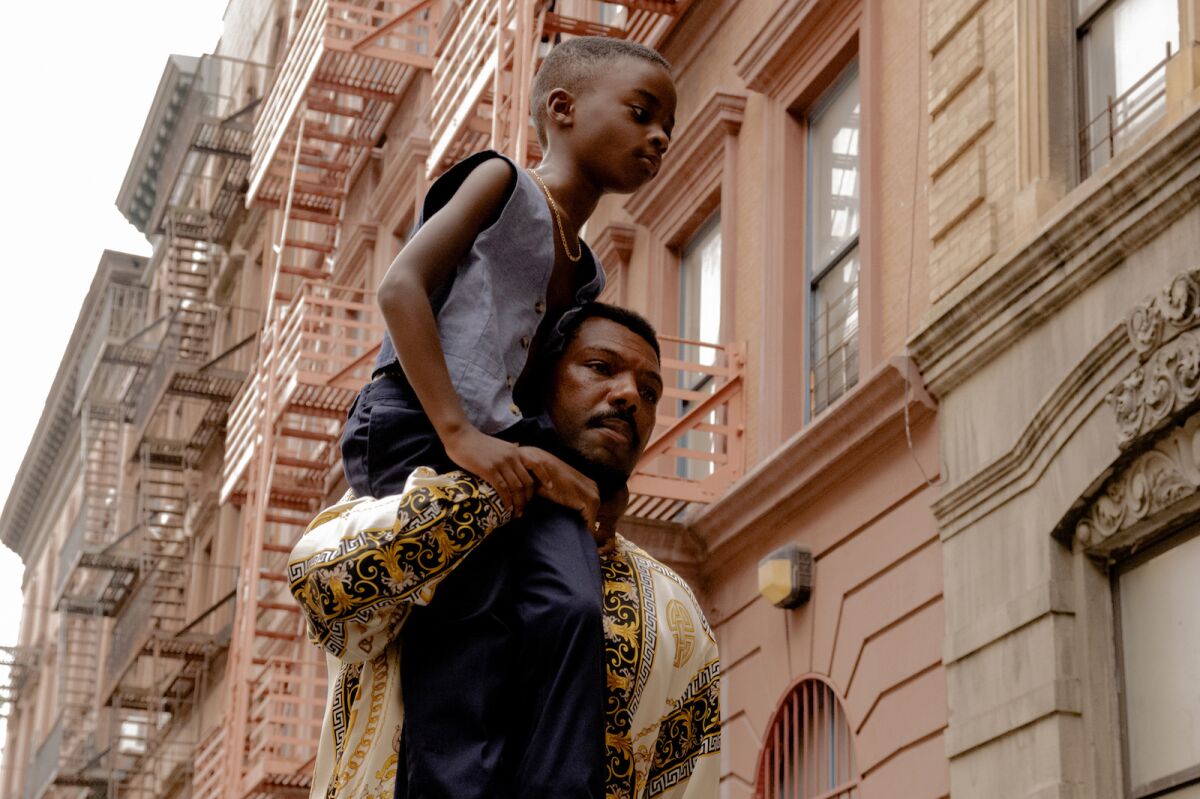A Thousand and One review - fighting the system in 1990s New York | reviews, news & interviews
A Thousand and One review - fighting the system in 1990s New York
A Thousand and One review - fighting the system in 1990s New York
AV Rockwell's beautifully crafted first feature captures the struggles of a black woman determined to make a family life

AV Rockwell well deserved the Grand Jury award at Sundance in January for her debut feature film, A Thousand and One.
It’s hard to believe that this subtle portrait of a troubled young woman trying to raise a child is the work of a first time writer-director, or that Inez, its gritty protagonist, is played with no vanity by the glamorous choreographer, singer, and reality TV star Teyana Taylor.
We first meet Inez in prison where she’s doing her cellmate’s hair. It’s 1994 and she’s about to be released after a year inside. Back in her old Brooklyn neighbourhood, she is determined to get her life together. Inez finds six-year, Terry (Aaron Kingsley Adetola), who was taken in to foster care while she was in prison.
The little boy is wary of her after so much disruption, but she’s set on winning him back, even if it means effectively kidnapping him and hiding from social services in Harlem. Their relationship isn’t easy. Inez has a temper and she likes to have a good time, but she’s determined to give Terry a home and encourages him when he’s put in a school for gifted children.
Inez also grew up in care. A Thousand and One doesn’t shy away from showing the longterm emotional damage that shapes children who grow up without a family and the difficulties they have when they, in turn, become parents. Aaron Kingsley Adetola is superb as Terry and the scenes between him and Teyana Taylor are a master class in naturalistic acting. As the narrative moves on in time, the boy’s role is taken by two other young actors (Aven Courtney plays Terry at 13, and Josiah Cross at 17) who are a little less engaging on screen, mainly because Adetola is such a hard act to follow.
Inez’s on-again/off-again boyfriend Lucky (William Catlett) is not always the most faithful of partners, but he becomes a good father. The couple's wedding is one of the warmest scenes in the film. The complexity of family relationships are a powerful thread through A Thousand and One, but one that’s hard to describe without giving too much away. (Pictured below: Catlett as Lucky, with Adetola as Terry) Rockwell’s work as writer-director would be impressive if her film was just about these vivid characters and their intricate relationships, but they are framed by her oblique observations of how her native city changed in the '90s. The colourful Harlem neighbourhood where Inez first makes a home for Terry becomes gentrified; a crisis is forced when their run-down apartment building is allowed to rot so its owner can sell it to a developer.
Rockwell’s work as writer-director would be impressive if her film was just about these vivid characters and their intricate relationships, but they are framed by her oblique observations of how her native city changed in the '90s. The colourful Harlem neighbourhood where Inez first makes a home for Terry becomes gentrified; a crisis is forced when their run-down apartment building is allowed to rot so its owner can sell it to a developer.
Television news chronicles the change in policing policy ordered by Mayor Rudy Giuilani; when Terry becomes a teenager, he and his friends suffer intimidation on a regular basis. Rockwell never resorts to didacticism in her nuanced drama. She doesn’t hector the audience on the injustices of gentrification or racist policing, as Spike Lee did in Do the Right Thing, but credits us with the capacity to work it out for ourselves.
A Thousand and One – with its classical camerawork and atmospheric sound track – is reminiscent of the work of John Cassavetes (particularly Shadows and Gloria), and also shows the influence of black American directors like Charles Burnett, Leslie Harris, and Barry Jenkins. It’s altogether a powerful debut and not to be missed in the cinema.
rating
Explore topics
Share this article
The future of Arts Journalism
You can stop theartsdesk.com closing!
We urgently need financing to survive. Our fundraising drive has thus far raised £49,000 but we need to reach £100,000 or we will be forced to close. Please contribute here: https://gofund.me/c3f6033d
And if you can forward this information to anyone who might assist, we’d be grateful.

Subscribe to theartsdesk.com
Thank you for continuing to read our work on theartsdesk.com. For unlimited access to every article in its entirety, including our archive of more than 15,000 pieces, we're asking for £5 per month or £40 per year. We feel it's a very good deal, and hope you do too.
To take a subscription now simply click here.
And if you're looking for that extra gift for a friend or family member, why not treat them to a theartsdesk.com gift subscription?
more Film
 London Film Festival - from paranoia in Brazil and Iran, to light relief in New York and Tuscany
'Jay Kelly' disappoints, 'It Was Just an Accident' doesn't
London Film Festival - from paranoia in Brazil and Iran, to light relief in New York and Tuscany
'Jay Kelly' disappoints, 'It Was Just an Accident' doesn't
 Iron Ladies review - working-class heroines of the Miners' Strike
Documentary salutes the staunch women who fought Thatcher's pit closures
Iron Ladies review - working-class heroines of the Miners' Strike
Documentary salutes the staunch women who fought Thatcher's pit closures
 Blu-ray: The Man in the White Suit
Ealing Studios' prescient black comedy, as sharp as ever
Blu-ray: The Man in the White Suit
Ealing Studios' prescient black comedy, as sharp as ever
 The Woman in Cabin 10 review - Scandi noir meets Agatha Christie on a superyacht
Reason goes overboard on a seagoing mystery thriller
The Woman in Cabin 10 review - Scandi noir meets Agatha Christie on a superyacht
Reason goes overboard on a seagoing mystery thriller
 London Film Festival 2025 - crime, punishment, pop stars and shrinks
Daniel Craig investigates, Jodie Foster speaks French and Colin Farrell has a gambling habit
London Film Festival 2025 - crime, punishment, pop stars and shrinks
Daniel Craig investigates, Jodie Foster speaks French and Colin Farrell has a gambling habit
 I Swear review - taking stock of Tourette's
A sharp and moving tale of cuss-words and tics
I Swear review - taking stock of Tourette's
A sharp and moving tale of cuss-words and tics
 A House of Dynamite review - the final countdown
Kathryn Bigelow's cautionary tale sets the nuclear clock ticking again
A House of Dynamite review - the final countdown
Kathryn Bigelow's cautionary tale sets the nuclear clock ticking again
 theartsdesk Q&A: Idris Elba on playing a US President faced with a missile crisis in 'A House of Dynamite'
The star talks about Presidential decision-making when millions of lives are imperilled
theartsdesk Q&A: Idris Elba on playing a US President faced with a missile crisis in 'A House of Dynamite'
The star talks about Presidential decision-making when millions of lives are imperilled
 Urchin review - superb homeless drama
Frank Dillane gives a star-making turn in Harris Dickinson’s impressive directorial debut
Urchin review - superb homeless drama
Frank Dillane gives a star-making turn in Harris Dickinson’s impressive directorial debut
 Mr Blake at Your Service review - John Malkovich in unlikely role as an English butler
Weird comedy directed by novelist Gilles Legardinier
Mr Blake at Your Service review - John Malkovich in unlikely role as an English butler
Weird comedy directed by novelist Gilles Legardinier
 Don't Let's Go to the Dogs Tonight review - vivid adaptation of a memoir about a Rhodesian childhood
Embeth Davidtz delivers an impressive directing debut and an exceptional child star
Don't Let's Go to the Dogs Tonight review - vivid adaptation of a memoir about a Rhodesian childhood
Embeth Davidtz delivers an impressive directing debut and an exceptional child star

Add comment